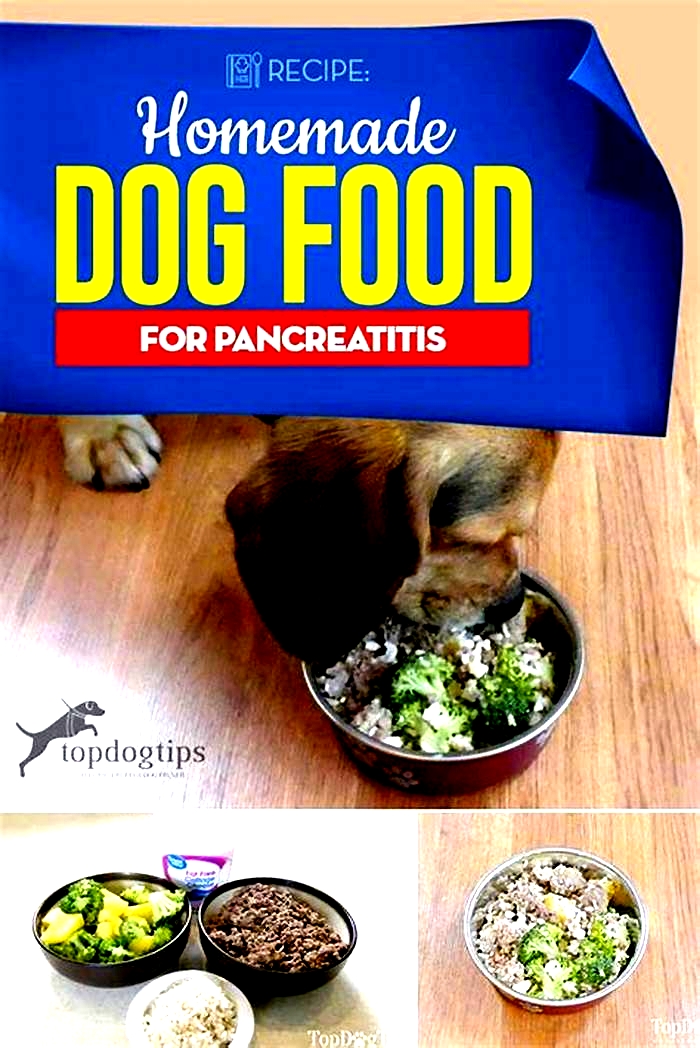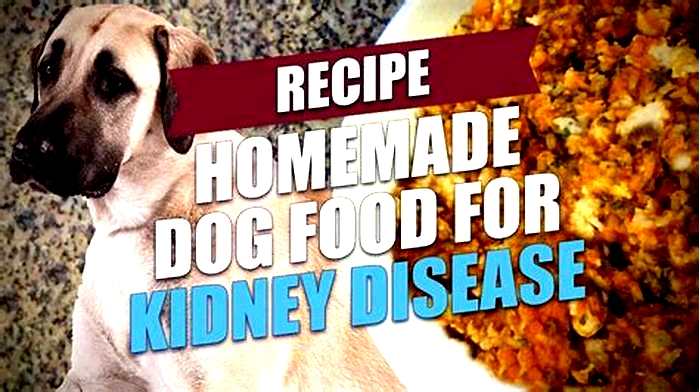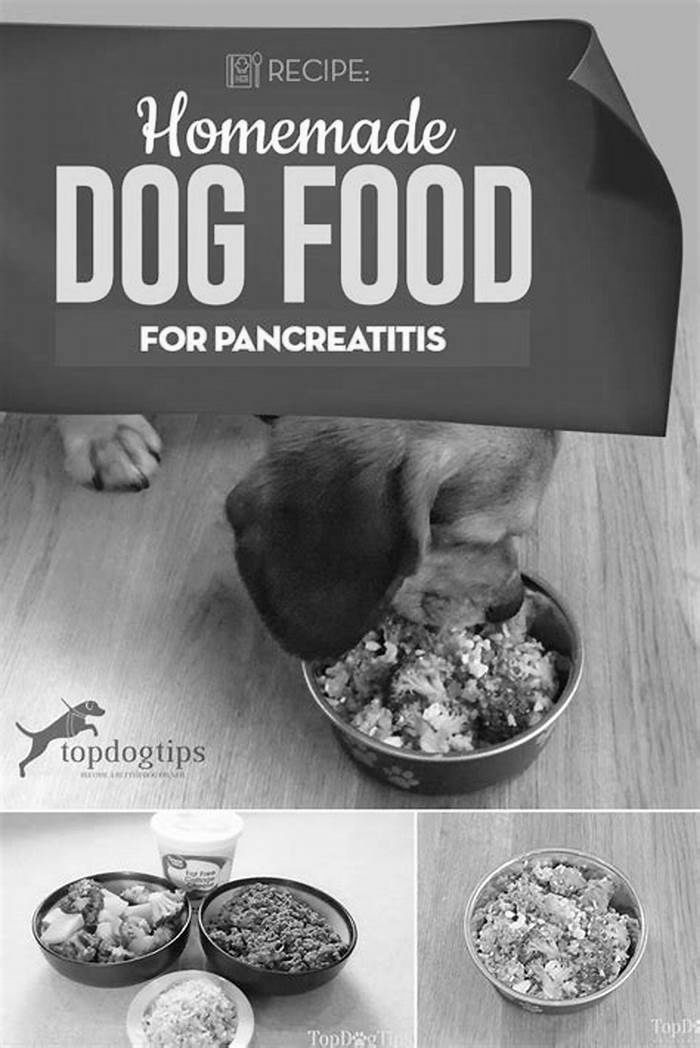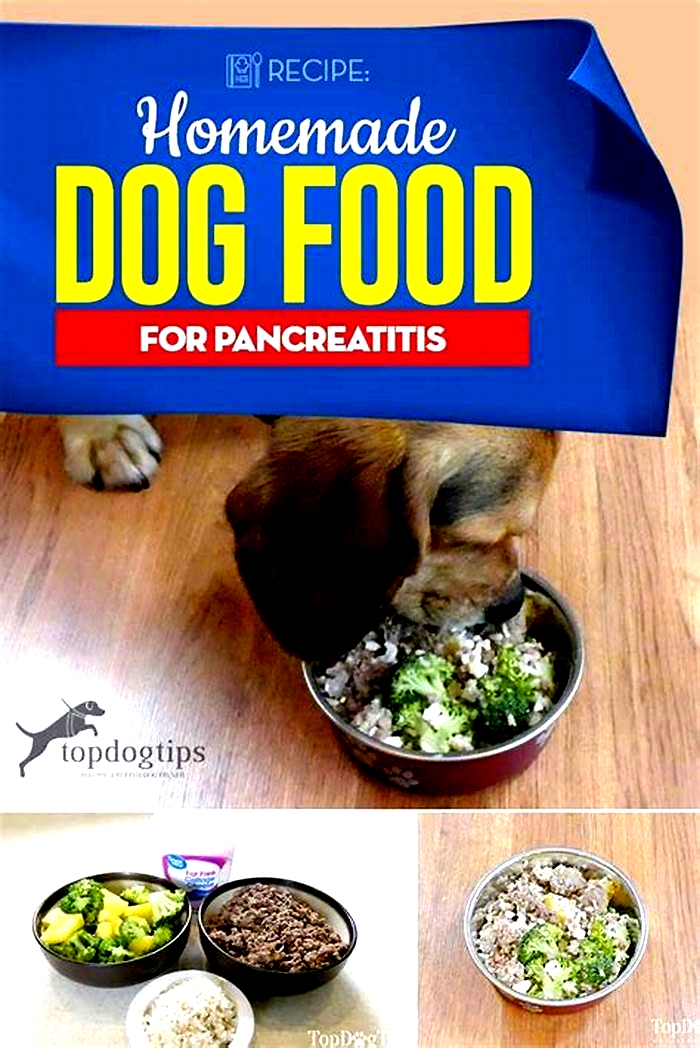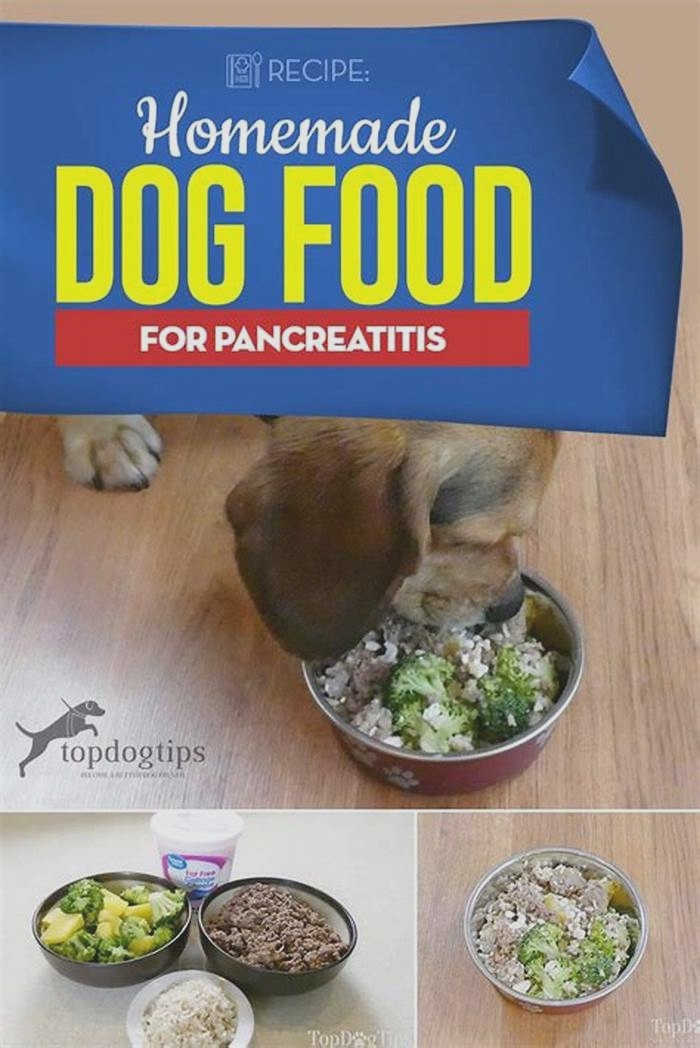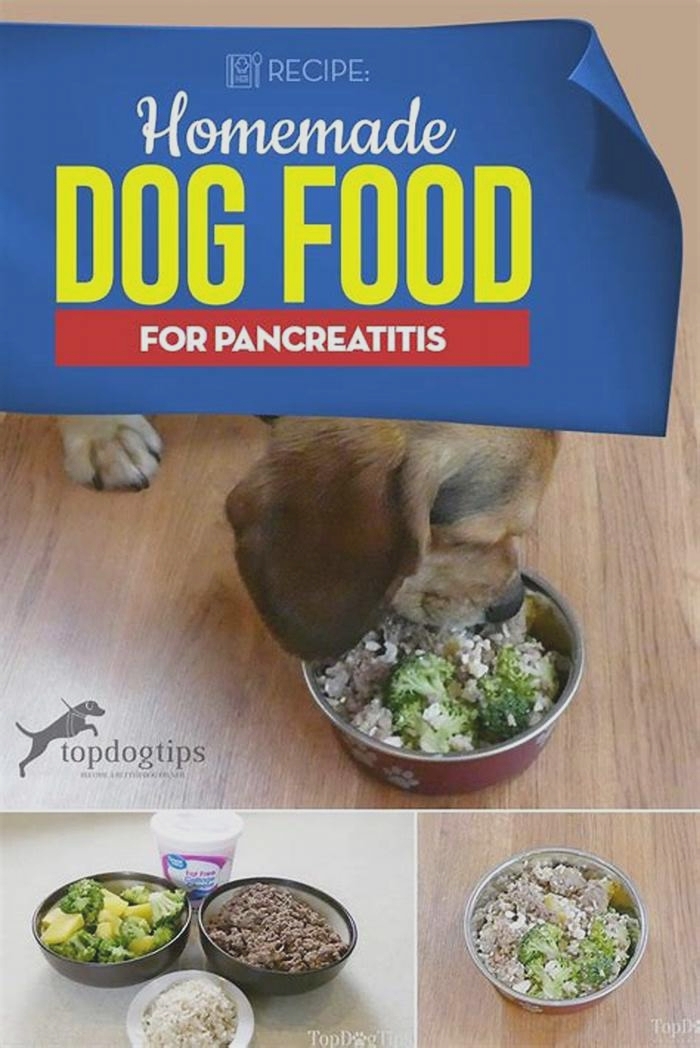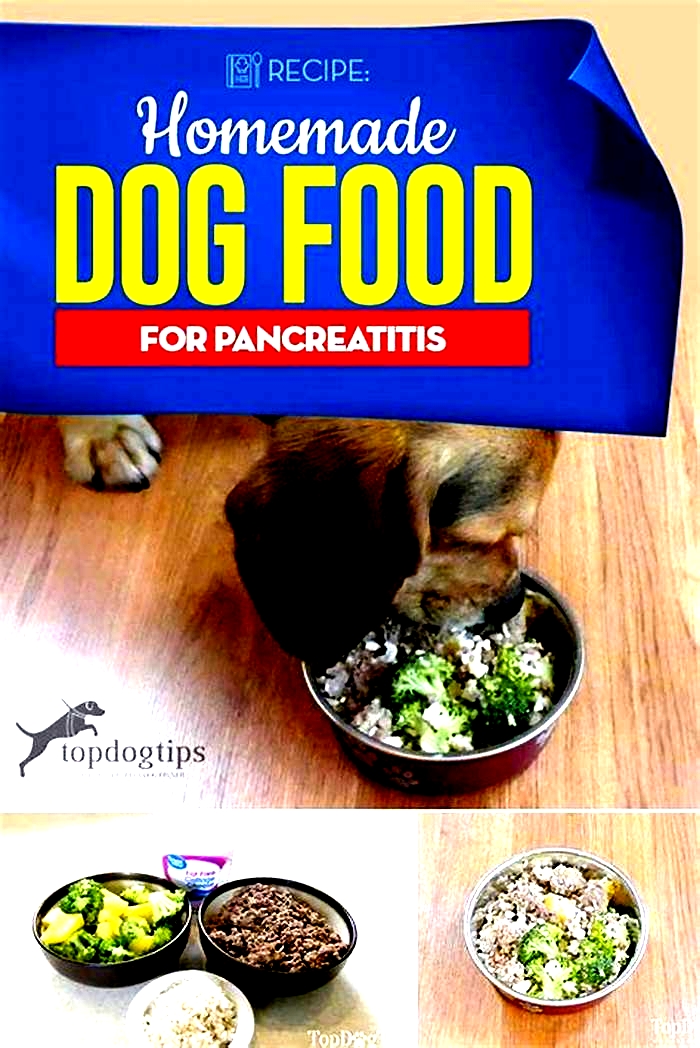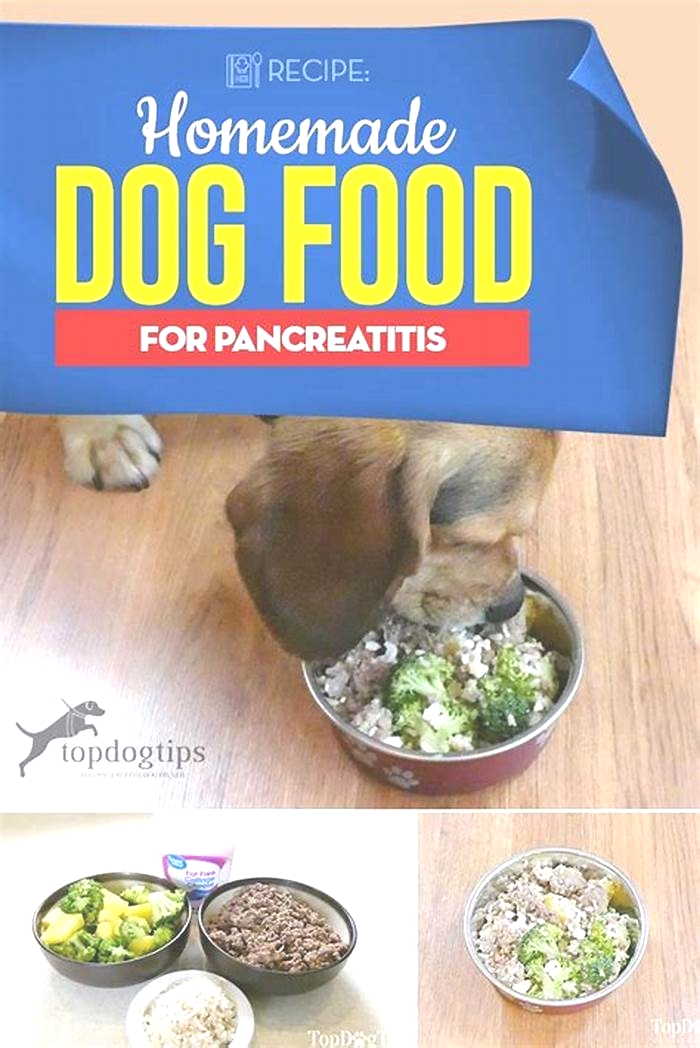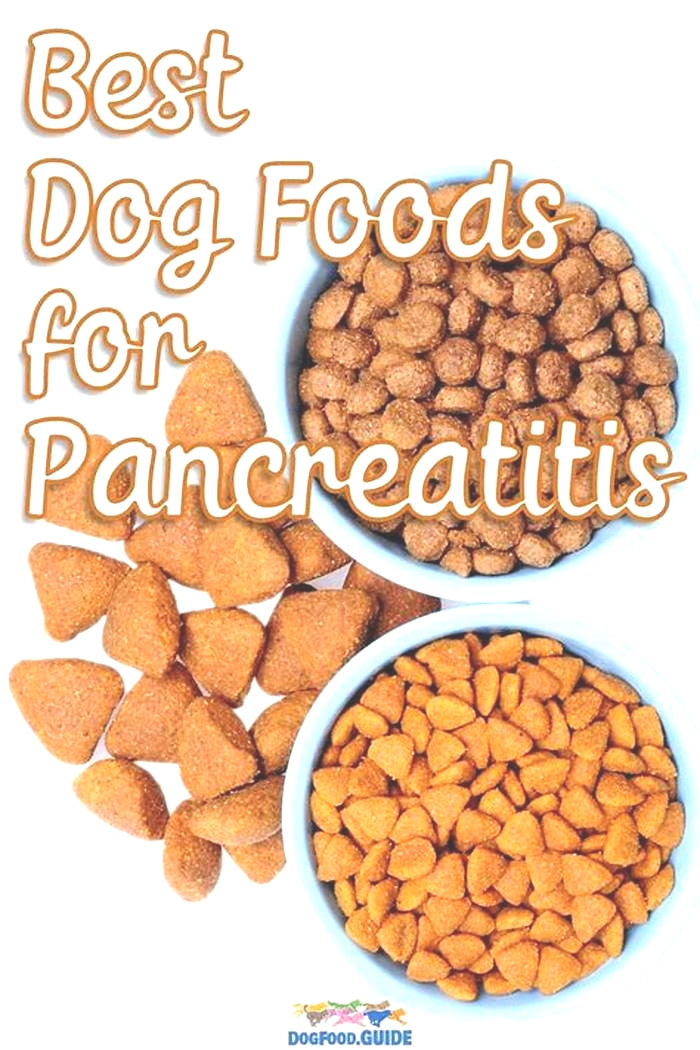homemade dog food recipes pancreatitis

Recipe: Homemade Dog Food for Pancreatitis
Pancreatitis in dogs is a disease that is quite common in domestic canines. This condition is an inflammation of the animal's pancreas (the organ is responsible for producing digestive enzymes and insulin). Serving homemade dog food for pancreatitiscan help manage this condition.
 When the pancreas becomes inflamed, the digestive enzymes it produces spill out and onto the surrounding organs. The organs closest to the pancreas are the liver and kidneys. When digestive enzymes spill over onto these vital organs, the body begins to digest them.
When the pancreas becomes inflamed, the digestive enzymes it produces spill out and onto the surrounding organs. The organs closest to the pancreas are the liver and kidneys. When digestive enzymes spill over onto these vital organs, the body begins to digest them.
Vomiting, fever, diarrhea, and difficulty breathing are all symptoms of pancreatitis. If any of these symptoms come on quickly or you notice a combination of the previously mentioned symptoms, you need to seek veterinary attention immediately. I know these symptoms could also be a sign of numerous other conditions, but when it comes to your dog's health, it's better to be safe than sorry.
Your veterinarian will likely recommend a restricted diet if your dog is diagnosed with pancreatitis. Your dog's body has a lot of healing to do, and a limited diet that includes homemade dog food for pancreatitis is likely the best option.
READ MORE:Pancreatitis in Dogs Symptoms, At-Home and Veterinary Treatment, Prevention
Homemade Dog Food for Pancreatitis Recipe
 Ingredients
Ingredients
- 1 cup lean ground beef (fat drained)
- 1 cup brown rice (cooked)
- 3/4 cup nonfat cottage cheese
- 1/2 cup squash
- 1/2 cup broccoli
Directions
If you don't seek veterinary care for a dog suffering from pancreatitis, the condition is sure to get worse. In fact,if left untreated pancreatitis can be life-threatening. Low-fat diets are typically recommended for dogs suffering from this condition.
This homemade dog food for pancreatitis is simple to make. With just 5 ingredients, this recipe takes about 30 minutes to prepare.
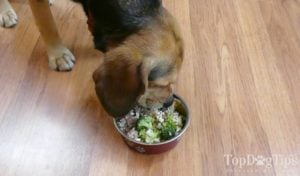 First, you'll need to cook the ground beef and drain the fat. You will also have to cook the rice according to the instructions on the package. You need 1 cup of COOKED rice, which will come from about 1/2 cup of UNCOOKED rice.
First, you'll need to cook the ground beef and drain the fat. You will also have to cook the rice according to the instructions on the package. You need 1 cup of COOKED rice, which will come from about 1/2 cup of UNCOOKED rice.
You will also need to steam or boil the squash and broccoli. Once all of the ingredients are prepared, all you have to do is combine them in a medium-size mixing bowl.
The recommended serving size for this homemade dog food for pancreatitis is about a 1/2 cup for every 25 pounds of body weight per serving. You'll need to feed 2 servings per day. For example, if your dog weighs 50 pounds, he would need 1 cup of food in the morning and 1 cup at night.
You can store leftovers in the refrigerator for 5-7 days. You can also make this food in bulk and store it in the freezer for up to 3 months.

READ NEXT: 6 Most Common Homemade Dog Food Ingredients
A Tail-Wagging Guide to Homemade Pancreatitis Diet Recipes for Dogs
Hey there, pet parents! Are you on a scavenger hunt for the perfect diet for your furball whos battling pancreatitis? Look no further! While were no veterinarians, weve dug up some critical insights and mouth-watering homemade recipes that might just make your pups tail wag with joy. Remember, its always a good idea to consult with a vet before making dietary changes, especially for health conditions like pancreatitis. Lets embark on this culinary journey together, shall we?
Understanding Pancreatitis in Dogs
Before we dive into the deliciousness, lets get a lay of the land. Pancreatitis in dogs means inflammation of the pancreas, making digestion a bit of a rough ride. Symptoms might include vomiting, abdominal pain, and lethargy. This calls for a diet thats low in fat and easy on the tummy but still packed with all the nutrients a playful pup needs.
Top 10 Homemade Recipes: Your Dogs Gourmet Menu
Weve crafted a special menu thats both scrumptious and soothing for your dogs sensitive situation. Heres the gourmet lineup:
| Recipe | Main Ingredients | Why Its Pawesome |
|---|---|---|
| Gentle Chicken Stew | Boiled chicken, rice, carrots | Low-fat & comforting |
| Soothing Pumpkin Mash | Pumpkin, a pinch of cinnamon | Fiber-rich & stomach-soothing |
| Tummy-Friendly Turkey Rice | Ground turkey, brown rice, zucchini | Easy to digest & nutritious |
| Healing Broth Bowls | Low-fat beef broth, parsley | Hydrating & appetite-stimulating |
| Omega Boost Fish Feast | Steamed salmon, sweet potatoes | Omega-3s for inflammation |
| Veggie Delight Scramble | Egg whites, spinach, bell peppers | Low fat & packed with antioxidants |
| Quinoa Canine Comfort | Quinoa, lean ground beef, peas | Protein-rich & fiber-filled |
| Lean Green Bean Dream | Green beans, chicken breast | Low calorie & filling |
| Sweet Potato & Apple Snack | Sweet potato, apple slices | Vitamins & fiber |
| Blissful Banana Yogurt Freeze | Banana, plain low-fat yogurt | Cool treat & probiotic-rich |
Feeding Fido: Critical Tips and Insights
1. Portion Control is Key
Start with small, frequent meals to ease the burden on your dogs digestion. Think little and often to keep them satisfied without overwhelming their system.
2. Keep It Low Fat
High-fat foods can exacerbate pancreatitis, so focus on lean meats and low-fat cooking methods. Boiling or steaming is better than frying.
3. Hydration Station
Ensure your pup has access to plenty of fresh water to help their digestion and keep them hydrated, especially if theyve been vomiting.
4. The Gradual Swap
If youre transitioning to a new diet, do it gradually over several days to prevent any digestive upsets. Slow and steady wins the race!
5. Listen to Your Vet
Always, always consult your vet before making dietary changes, especially for chronic conditions like pancreatitis. They can offer tailored advice and support.
Wrap Up: A Spoonful of Care
Embarking on a homemade diet journey for your dog with pancreatitis is a labor of love. It requires patience, creativity, and a sprinkle of culinary flair. But, seeing your furry friends health improve is the ultimate reward. Remember to consult with your vet, keep meals balanced, and watch your dog for any signs of improvement or distress. Happy cooking, and heres to many more wagging tails!
Expert Insights on Pancreatitis Diets for Dogs
Q: Lets start at the very beginning. When a dog is diagnosed with pancreatitis, whats the first step a pet parent should take in adjusting their diet?
A: Absolutely, the initial step is to give the pancreas a rest. This might sound counterintuitive, but fasting for a short period, usually 24 hours, under veterinary supervision, can significantly reduce the strain on the pancreas. After this brief fasting, introducing a bland, low-fat diet is key. Foods that are easy to digestlike boiled chicken and rice, minus any seasoningare ideal starters. Its about rebooting the digestive system gently and gradually.
Q: Theres a lot of talk about low-fat diets. Can you delve deeper into why fat content is so crucial for dogs with pancreatitis?
A: Certainly, the role of fat in a pancreatitis-prone diet cannot be overstated. The pancreas plays a pivotal role in fat digestion by producing enzymes that break down fats. When the pancreas is inflamed, digesting fat becomes a Herculean task, leading to discomfort and worsening symptoms. By keeping the diet low in fat, we reduce the workload on the pancreas, allowing it to heal. Its not just about reducing fat, though; the quality of fat matters too. Omega-3 fatty acids, for instance, can actually aid in reducing inflammation, making them a precious ally in the diet.
Q: Hydration is often mentioned in passing, but how critical is it, and how can pet parents ensure their dogs stay hydrated?
A: Hydration is the unsung hero in managing pancreatitis. Dehydration can quickly complicate matters, leading to further health issues. Beyond keeping the water bowl full, incorporating hydrating foods into the diet can be a game-changer. Foods with high moisture content, such as cucumbers or watermelon (in moderation and suitable for dogs), can be excellent for keeping hydration levels up. Broth-based meals, like a healing beef broth with a sprinkle of parsley, not only encourage fluid intake but also offer nutritional benefits. Encouraging frequent, small sips of water, especially after a bout of vomiting, can help maintain hydration without overwhelming the stomach.
Q: Transitioning to a homemade diet sounds daunting. Whats your advice for pet parents who are ready to make the switch but dont know where to start?
A: The transition can seem like a leap into the unknown, but its more of a step-by-step journey. Begin by consulting with a veterinary nutritionist to ensure the diet meets all your dogs nutritional needs. Start simple, with one or two key ingredients, and gradually introduce more variety. Keep a food diary to note what works and what doesnt, including any changes in symptoms. Meal prepping can also be a lifesaverpreparing batches of meals in advance ensures youre not caught off guard. Lastly, remember, this is a marathon, not a sprint. Patience and observation are your best tools.
Q: Finally, for the skeptics out there, can a homemade diet truly make a difference in managing pancreatitis in dogs?
A: Skepticism is natural, especially when faced with a myriad of diet options and opinions. However, the power of a well-crafted, homemade diet lies in its tailorability. Unlike commercial foods, a homemade diet can be adjusted to the unique needs of your dog, taking into account their specific health issues, likes, and dislikes. With pancreatitis, where every dogs tolerance to certain foods can vary, this customization can make all the difference. It allows for the reduction of fat to just the right level, the incorporation of anti-inflammatory ingredients, and the exclusion of anything that might trigger a flare-up. The evidence, though anecdotal in many cases, shows that dogs on carefully considered homemade diets often show marked improvements in both their symptoms and their overall vitality.
HELP US PUT FOOD ON THE TABLE
Best Homemade Dog Food for Pancreatitis: Vet-Approved Recipes
Discover the best homemade dog food for pancreatitis. Keep your pup healthy and happy.
Homemade Dog Food for Pancreatitis: A Personal Approach to Canine Health
After researching the benefits of homemade dog food for pancreatitis, Ive discovered the importance of tailoring my dogs diet to his specific needs. By controlling the ingredients and quality, I can avoid harmful additives and preservatives, and ensure he gets the essential nutrients necessary for his overall well-being.
Homemade Dog Food for Pancreatitis: A Nutritious Solution
Discover how to create a specialized diet for your dog suffering from pancreatitis, using simple and wholesome ingredients that promote healing and overall well-being.
Compelling reason to read the rest of the article: By following our homemade dog food recipe, you can provide your furry friend with a nutritious and tailored diet that can aid in managing pancreatitis symptoms and improving their quality of life.
Benefits of Homemade Dog Food for Pancreatitis
When it comes to managing pancreatitis in dogs, homemade dog food for pancreatitis can offer several advantages over commercial options. Here are some of the benefits:
A. Control over ingredients and quality
By preparing homemade dog food for pancreatitis, you have complete control over the ingredients that go into your pets food. This allows you to ensure that only high-quality, nutritious ingredients are used, which can be especially beneficial for dogs with pancreatitis.
B. Avoidance of harmful additives and preservatives
Commercial dog foods often contain additives and preservatives that may not be suitable for dogs with pancreatitis. By making homemade dog food, you can avoid these potentially harmful ingredients and provide a more natural and wholesome diet for your pet.
C. Tailoring the diet to the specific needs of the dog
Every dog is unique, and their dietary needs can vary, especially when dealing with pancreatitis. Homemade dog food for pancreatitis allows you to tailor the diet to your dogs specific requirements, ensuring that they receive the nutrients they need without any unnecessary additives or fillers.
Overall, homemade dog food for pancreatitis can be a beneficial option for managing this condition in dogs, providing a more personalized and natural approach to their dietary needs.
Essential Nutrients for Dogs with Pancreatitis
When preparing homemade dog food for pancreatitis, its crucial to ensure that the diet includes essential nutrients that support pancreatic health and overall well-being. Here are the key nutrients to focus on:
A. Protein sources suitable for dogs with pancreatitis
Lean protein sources such as chicken, turkey, and fish are ideal for dogs with pancreatitis. These proteins are easier for the pancreas to process and are less likely to trigger inflammation.
B. Healthy fats and oils for pancreatic health
Include healthy fats such as olive oil, flaxseed oil, and fish oil in the homemade dog food. These fats support pancreatic function and provide essential fatty acids for your dogs health.
C. Carbohydrates and fiber for digestive health
Choose easily digestible carbohydrates such as sweet potatoes, brown rice, and oats. These provide energy while also being gentle on the digestive system. Additionally, include fiber-rich ingredients like pumpkin and leafy greens to support digestive health.
D. Vitamins and minerals necessary for overall well-being
Ensure that the homemade dog food includes a variety of vitamins and minerals to support your dogs overall health. This may include vitamin E, vitamin D, calcium, and other essential nutrients.
By focusing on these essential nutrients, you can create a balanced and nourishing diet for dogs with pancreatitis, promoting their health and well-being.
Homemade Dog Food Recipes for Pancreatitis
When it comes to managing pancreatitis in dogs, homemade dog food can be a beneficial option. By preparing meals at home, dog owners have better control over the ingredients and can tailor the diet to meet the specific needs of their pet. Here are some homemade dog food recipes for pancreatitis:
A. Low-fat protein sources and their preparation
When preparing homemade dog food for pancreatitis, its important to choose lean protein sources to reduce the fat content. Some suitable options include:
- Skinless, boneless chicken breast
- Lean ground turkey
- Cooked fish (such as cod or haddock)
B. Healthy carbohydrates and fiber-rich ingredients
Carbohydrates and fiber play a crucial role in digestive health for dogs with pancreatitis. Incorporating these ingredients into homemade dog food can provide essential nutrients while being gentle on the pancreas. Consider using:
- Sweet potatoes
- Pumpkin
- Quinoa
C. Incorporating essential vitamins and minerals
Ensuring that homemade dog food for pancreatitis includes necessary vitamins and minerals is vital for overall well-being. Some key nutrients to include are:
- Omega-3 fatty acids (from sources like fish oil)
- Calcium (from sources like ground eggshells or supplements)
- Vitamin E (from sources like spinach or broccoli)
D. Cooking methods and portion control
How the food is prepared and portioned also plays a role in managing pancreatitis. Opt for cooking methods such as boiling or baking, and be mindful of portion sizes to prevent overfeeding.
By following these homemade dog food recipes for pancreatitis, dog owners can provide their pets with a nutritious and pancreas-friendly diet.
Transitioning to Homemade Dog Food
Transitioning your dog to a homemade dog food for pancreatitis should be done gradually to avoid any digestive upset. Here are some important steps to follow:
Gradual Introduction
Start by mixing a small amount of the homemade dog food with your dogs current diet. Slowly increase the proportion of homemade food over the course of a week or two until your dog is fully transitioned.
Monitoring Response
Pay close attention to how your dog responds to the new diet. Look for any signs of digestive discomfort or allergic reactions. If you notice any issues, consult with your veterinarian for guidance.
Adjusting the Diet
Every dog is unique, so its important to be flexible with the homemade dog food recipe. If you notice that certain ingredients are not well-tolerated by your dog, make adjustments as needed to ensure their health and well-being.
Overall, transitioning to homemade dog food for pancreatitis requires patience and careful observation of your dogs response. By following these steps and staying in close communication with your veterinarian, you can provide the best possible diet for your furry friends health.
Tips for Feeding Homemade Dog Food to Dogs with Pancreatitis
When it comes to feeding homemade dog food for pancreatitis, there are several important considerations to keep in mind. Here are some tips to help ensure that your dogs dietary needs are being met:
Feeding Schedule and Portion Sizes
Establish a consistent feeding schedule for your dog and carefully measure out portion sizes to prevent overfeeding, which can exacerbate pancreatitis symptoms.
Monitoring the Dogs Weight and Overall Health
Regularly monitor your dogs weight and overall health to ensure that the homemade diet is supporting their well-being and not causing any adverse effects.
Consulting with a Veterinarian for Guidance and Support
It is crucial to consult with a veterinarian who can provide personalized guidance and support when it comes to feeding homemade dog food for pancreatitis. They can help tailor the diet to your dogs specific needs and monitor their progress over time.
Potential Pitfalls and Risks of Homemade Dog Food for Pancreatitis
While homemade dog food can offer many benefits for dogs with pancreatitis, there are also potential pitfalls and risks to be aware of. Here are some considerations to keep in mind:
Common Mistakes to Avoid in Preparing Homemade Dog Food
Its important to educate yourself on the proper preparation of homemade dog food to avoid common mistakes that could compromise your dogs health.
Potential Nutrient Deficiencies and How to Address Them
Homemade dog food diets may be lacking in certain essential nutrients, so its important to understand how to address potential deficiencies through supplementation or ingredient adjustments.
Monitoring for Any Adverse Reactions or Complications
Keep a close eye on your dog for any adverse reactions or complications that may arise from the homemade diet, and be prepared to make adjustments as needed to ensure their well-being.
Potential Pitfalls and Risks of Homemade Dog Food for Pancreatitis
Common Mistakes to Avoid in Preparing Homemade Dog Food
When preparing homemade dog food for pancreatitis, its important to avoid certain common mistakes that could potentially worsen the condition:
- Using high-fat ingredients
- Adding spices or seasonings that may irritate the pancreas
- Not properly balancing the diet with essential nutrients
Potential Nutrient Deficiencies and How to Address Them
Homemade dog food for pancreatitis may sometimes lack certain essential nutrients, leading to potential deficiencies. Its crucial to address these by:
- Consulting with a veterinarian or canine nutritionist to ensure the diet is well-balanced
- Incorporating supplements if necessary to meet the dogs nutritional needs
- Regularly monitoring the dogs health and making adjustments as needed
Monitoring for Any Adverse Reactions or Complications
While homemade dog food for pancreatitis can be beneficial, its important to closely monitor the dog for any adverse reactions or complications, such as:
- Increased vomiting or diarrhea
- Weight loss or lack of appetite
- Changes in behavior or energy levels
By being aware of these potential pitfalls and risks, dog owners can take proactive measures to ensure that their homemade dog food for pancreatitis is both safe and beneficial for their pets health.
Conclusion
Homemade dog food for pancreatitis offers numerous benefits for dogs struggling with this condition. By taking control of the ingredients and quality of the food, dog owners can provide their pets with a diet tailored to their specific needs. However, it is crucial to consult with a veterinarian for personalized guidance and support throughout the process.
It is important for dog owners to understand that transitioning to homemade dog food for pancreatitis requires careful monitoring and adjustments as needed. By following a feeding schedule, monitoring the dogs weight and overall health, and consulting with a veterinarian, dog owners can ensure that their pet is receiving the best possible care.
While there are potential pitfalls and risks associated with preparing homemade dog food, such as nutrient deficiencies and adverse reactions, these can be addressed with proper education and vigilance. By avoiding common mistakes and being aware of potential complications, dog owners can provide their pets with a balanced and nutritious diet.
Overall, dog owners are encouraged to explore homemade options for their pets health, particularly when dealing with pancreatitis. With the right knowledge and support, homemade dog food can be a beneficial and natural way to manage this condition and improve the overall well-being of dogs.

